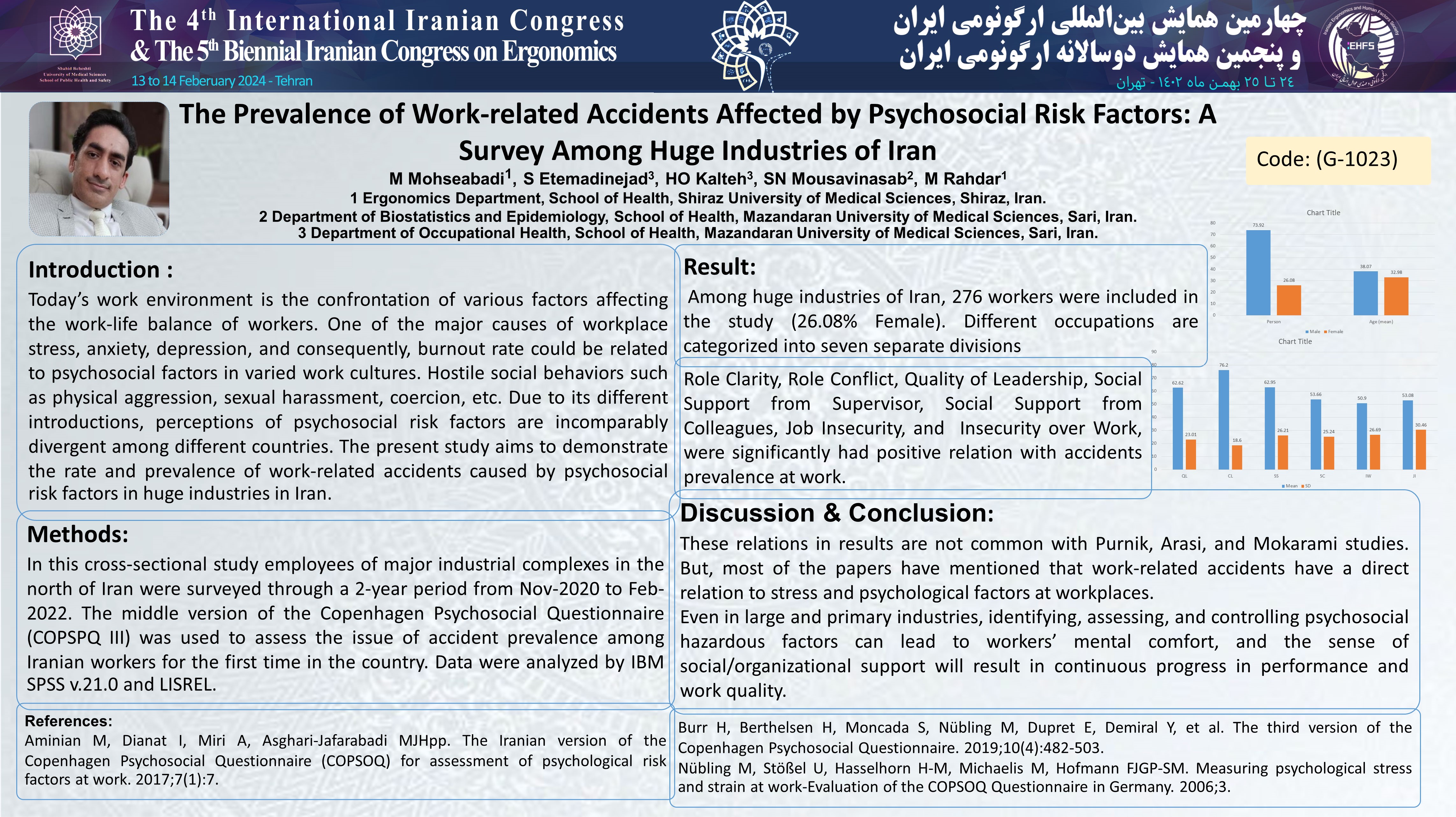بروز حوادث مرتبط با کار تحت تأثیر عوامل خطر روانی اجتماعی: یک بررسی در صنایع بزرگ ایران
کد: G-1023
نویسندگان: محسن محسن آبادی © ℗, سید نور الدین موسوی نسب, حاجی امید کلته, محمد رهدار, سیاوش اعتمادی نژاد
زمان بندی: زمان بندی نشده!
دانلود: دانلود پوستر
خلاصه مقاله:
مقدمه
Today’s work environment is the confrontation of various factors affecting the work-life balance of workers. One of the major causes of workplace stress, anxiety, depression, and consequently, burnout rate could be related to psychosocial factors in varied work cultures. Hostile social behaviors such as physical aggression, sexual harassment, coercion, etc. Due to its different introductions, perceptions of psychosocial risk factors are incomparably divergent among different countries. The present study aims to demonstrate the rate and prevalence of work-related accidents caused by psychosocial risk factors in huge industries of Iran.
مواد و روشها
In this cross-sectional study employees of major industrial complexes in the north of Iran were surveyed through a 2-year period from Nov-2020 to Feb-2022. The middle version of the Copenhagen Psychosocial Questionnaire (COPSPQ III) was used to assess the issue of accident prevalence among Iranian workers for the first time in the country. Data were analyzed by IBM SPSS v.21.0 and LISREL.
یافتهها
Among huge industries of Iran, 276 workers were included in the study (26.08% Female). Different occupations are categorized into seven separate divisions. For a wide range of duties in different industries, the results demonstrated a wide range of people experienced occupational accidents (n=231) relating to their socio-cultural workplace atmosphere. Statistical outcomes manifested a significant link between psychosocial factors and accident prevalence including “Role Clarity (p-value =0.03), Role Conflict (p-value =0.02), Quality of Leadership (p-value =0.02), Social Support from Supervisor (p-Value=0.02), Social Support from Colleagues (p-Value=0.05), Job Insecurity (p-value =0.03), and Insecurity over Work Conditions (p-value =0.05)”. It is also revealed that the majority of industry workers had at least two severe experiences of accidents related to psychosocial issues during their careers. The outcome was the leastways five times for moderate to low experiences.
نتیجهگیری
Even in large and primary industries, identifying, assessing, and controlling psychosocial hazardous factors can lead to workers’ mental comfort, and the sense of social/organizational support will result in continuous progress in performance and work quality.
واژگان کلیدی
Accident, Macroergonomics, Psychosocial factors, Organizational Support, Risk Management.
دیدگاه ها (0)
ارسال یک دیدگاه
ارسال دیدگاه توسط مدیریت بسته شده است.
